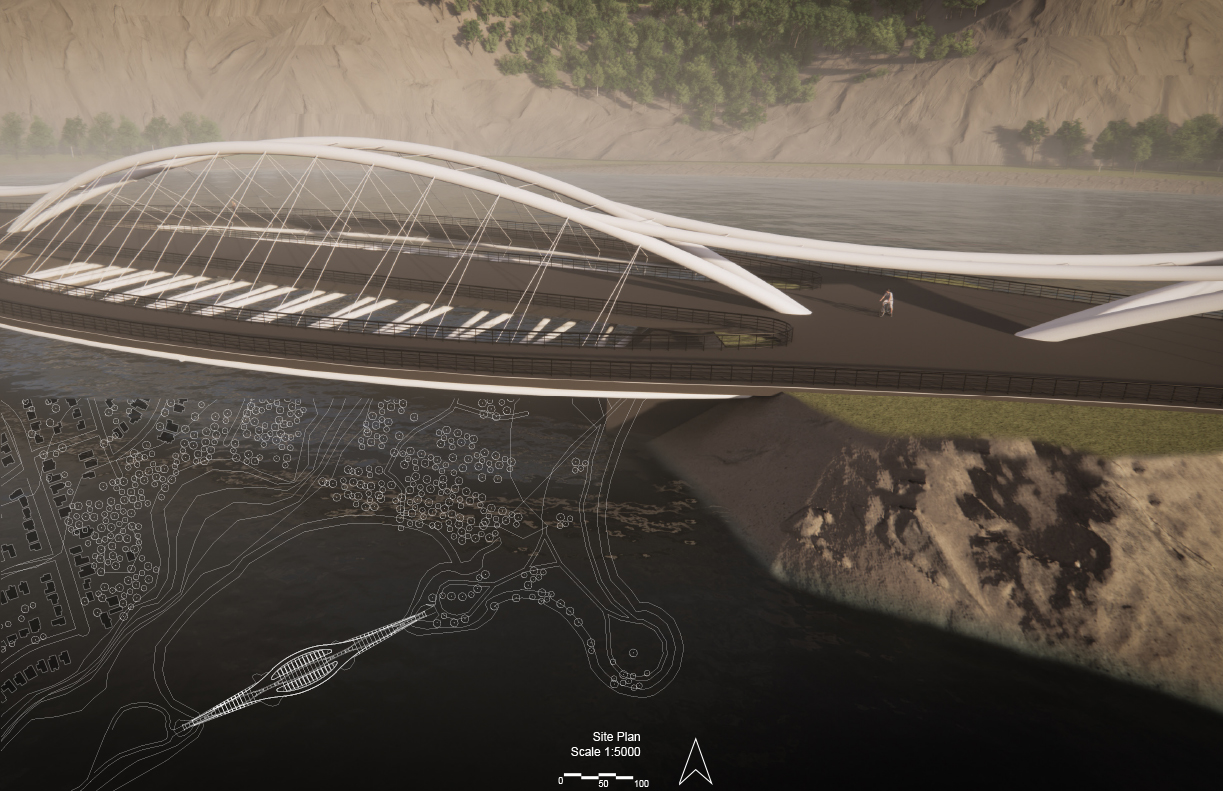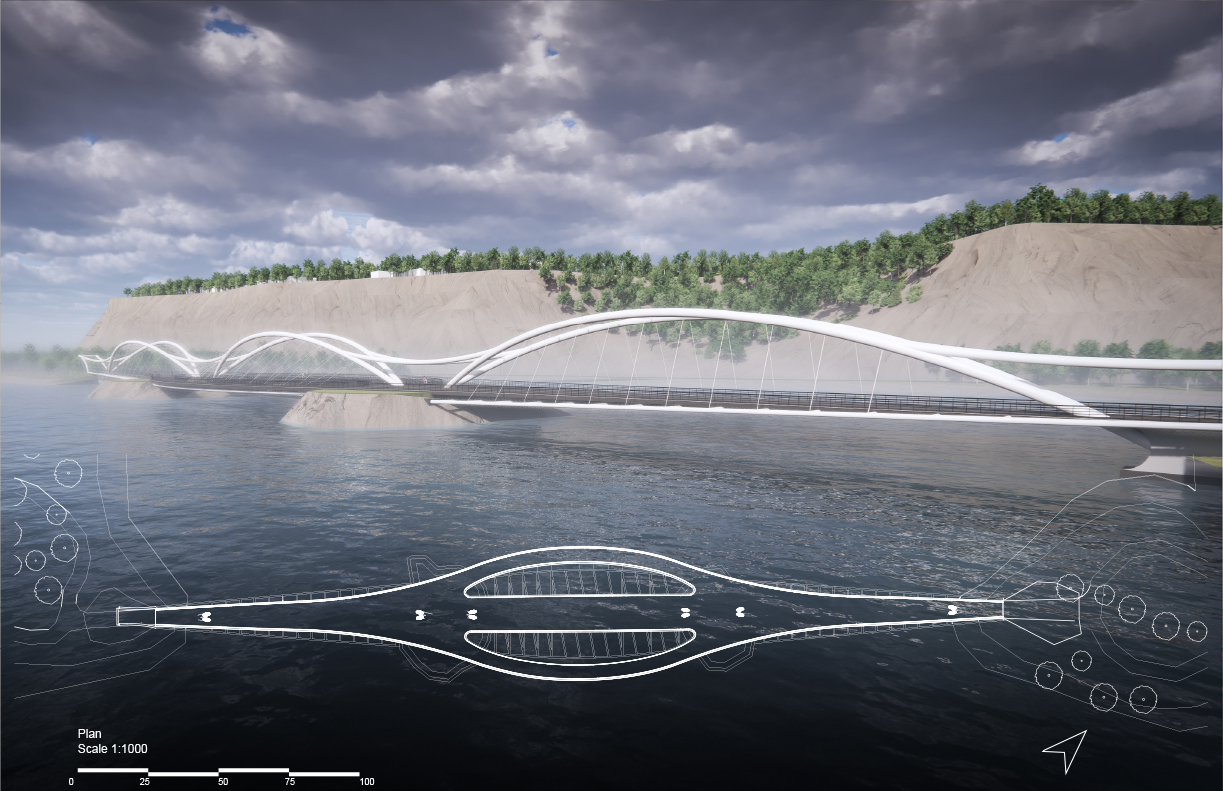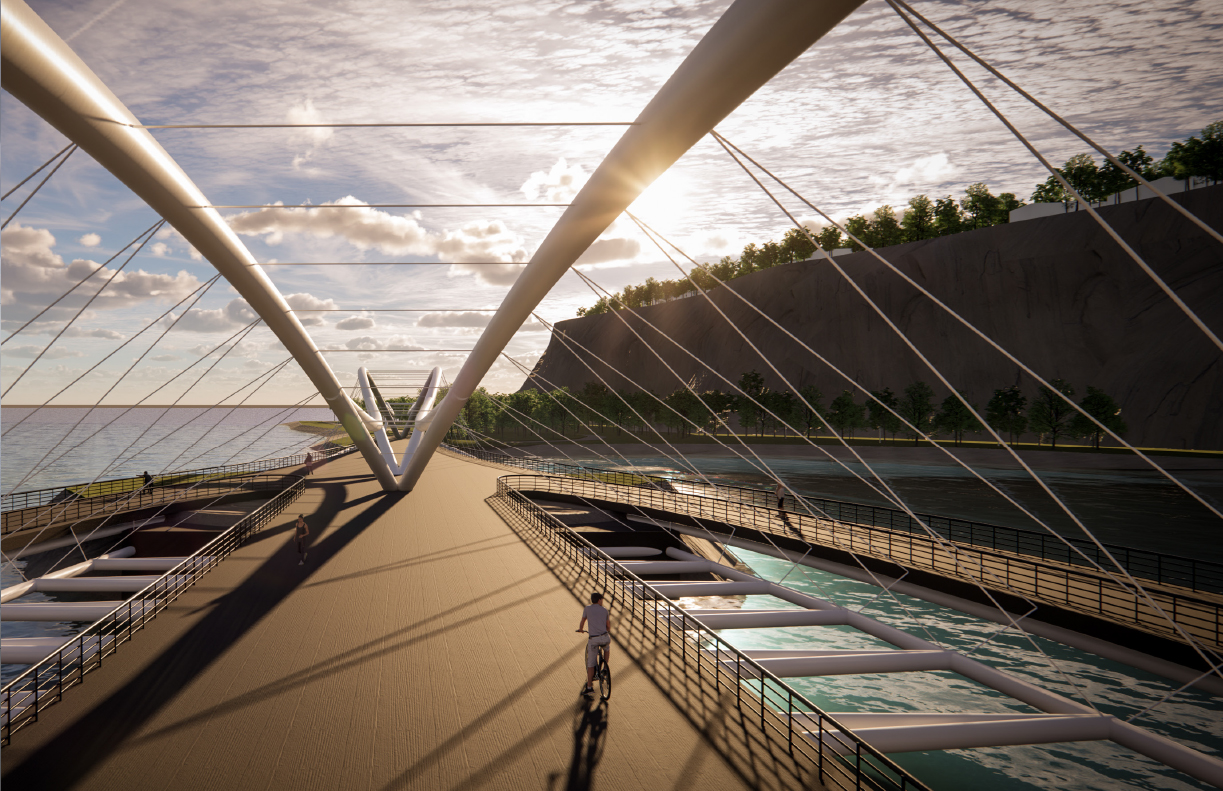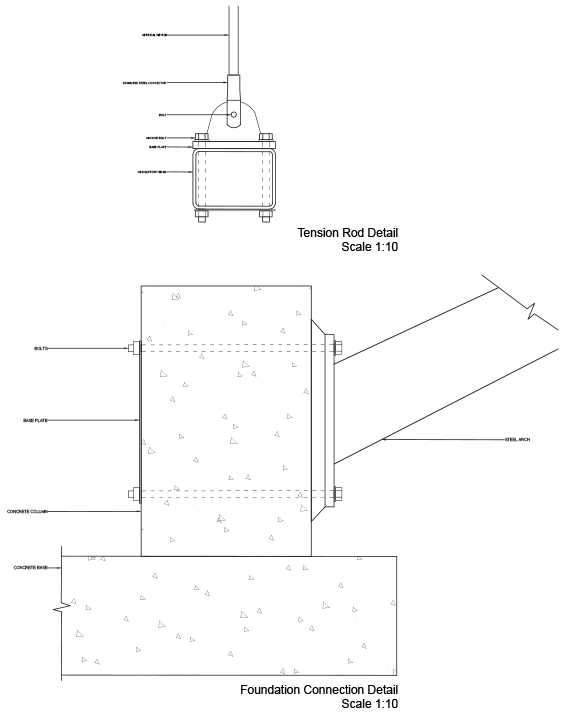Nathaniel Barry, Matthew Lokun, Silvana Di Meglio
A Bridge to a View: CONVERGENCE
When the expressways and CN Tower were not a thought in the 1600s, the Scarborough Bluffs was the first and final visible beacon that travelers viewed from the east. The lake in which the bluffs sit on was once the freeway in and out of the city, filled with canoes, sail and steam ships. This was a landmark for Aboriginal canoeists navigating the lake, as well as for the first French explorers. This profound natural feature in our city equips individuals with the opportunity to explore and hike around the bluffs, however, individuals currently cannot experience the bluffs at a more personal level. The bridge allows for hikers, walkers, and cyclists to experience the area and natural surroundings at a deeper level. Our main way of travelling in 2022 is by walking, bike, or car therefore, we are not as connected to the water and natural feature as citizens once were. The bridge across the water acts as a passage to connect people to each other, connects people to the structure and connects people to the natural surroundings. The arches and structural steel used to design and construct this bridge come together to provide a structure to connect individuals to their surroundings and provide a journey across this body of water.
A Bridge to a View: CONVERGENCE
When the expressways and CN Tower were not a thought in the 1600s, the Scarborough Bluffs was the first and final visible beacon that travelers viewed from the east. The lake in which the bluffs sit on was once the freeway in and out of the city, filled with canoes, sail and steam ships. This was a landmark for Aboriginal canoeists navigating the lake, as well as for the first French explorers. This profound natural feature in our city equips individuals with the opportunity to explore and hike around the bluffs, however, individuals currently cannot experience the bluffs at a more personal level. The bridge allows for hikers, walkers, and cyclists to experience the area and natural surroundings at a deeper level. Our main way of travelling in 2022 is by walking, bike, or car therefore, we are not as connected to the water and natural feature as citizens once were. The bridge across the water acts as a passage to connect people to each other, connects people to the structure and connects people to the natural surroundings. The arches and structural steel used to design and construct this bridge come together to provide a structure to connect individuals to their surroundings and provide a journey across this body of water.




